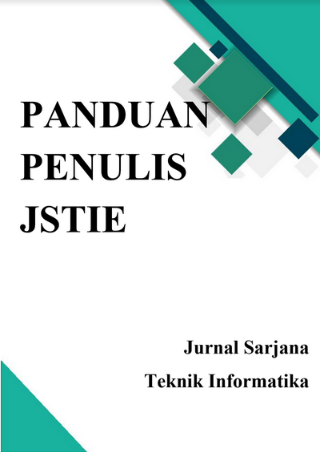ANALISIS PENERAPAN SEO(SEARCH ENGINE OPTIMIZATION) DAN SMO(SOCIAL MEDIA OPTIMIZATION) PADA WEBSITE FAKULTAS DI UNIVERSITAS AHMAD DAHLAN UNTUK MENINGKATKAN PERINGKAT DI SEARCH ENGINE
DOI:
https://doi.org/10.12928/jstie.v2i2.2841Abstract
Sebuah website mempunyai kinerja terhadap search engine. Semakin baik maka akan mempermudah website mendapat pengunjung. Maka dari itu perlu optimalisasi SEO (search engine optimatization) dan SMO (social media optimization). Permasalahan terlihat dari parameter SEO yang kurang optimal dan popularitas website melalui social media yang masih kurang sehingga perlu dilakukan optimasi. Analisis website fakultas di UAD bertujuan untuk meningkatkan website berada diposisi teratas atau halaman pertama search engine serta menambah tingkat popularitas website di social media.
Analisis website fakultas di UAD akan diterapkan dengan dua metode dan beberapa tahapan. Metode yang digunakan adalah SEO dan SMO. Langkah awal dilakukan dengan menganalisis website fakultas di UAD dengan beberapa tool online. Menganalisis kebutuhan sistem melakukan persiapan, pelaksanaan yang meliputi pengukuran awal, optimasi dan pengukuran akhir kemudian melakukan tahap evaluasi. Metode pengujian menggunakan pretest, posttest dan uji nilai t. Dan terakhir memberikan rekomendasi kepada pihak biskom ( Biro Sistem Informasi dan Komunikasi ).
Hasil analisis pengukuran awal website fakultas di UAD menunjukan hasil yang kurang optimal, berdasarkan kondisi tersebut dilakukan optimasi. Hasil pengukuran akhir, penerapan SEO dan SMO serta evaluasi kinerja yang dilakukan terhadap website fakultas menunjukkan bahwa terdapat kenaikan yang cukup signifikan. Hal ini dibuktikan berdasarkan uji nilai t menggunakan paired t-test yang menghasilkan nilai t = -5.131 dan nilai –p = 0.03<0.05. Rekomendasi penambahan backlink, share social media dan update content telah diberikan kepada pihak biskom sehingga mengetahui pentingnya optimasi SEO dan SMO untuk website fakultas di UAD dalam membantu memperbaiki peringkat website utama UAD. Analisis penerapan SEO dan SMO yang sudah dilakukan mempunyai pengaruh terdapat peningkatan kinerja website terhadap peringkatan di search engine.
Kata kunci : Analisis, SEO, SMO, UADÂ
References
Shofyan, Mohamad. 2010. Website Fisika Interaktif Berbasis Html, Javascript, dan Wordpress. Skripsi. Malang: Fisika, Universitas Negeri Malang.
Afia, Atep Hidayat. 2012. Kontribusi Sistem Blog Edukasi Teknik Industri Terhadap Katagori Presence Webometrics Universitas Mercu Buana, [pdf],
(http://digilib.mercubuana.ac.id/manager/file_artikel_abstrak/Isi_Artikel_881396278462. pdf, diakses tanggal 21 februari 2014)
Mellia Marselina, 2012, Analisis kinerja Website Universitas Ahmad dahlan Dengan Metode SEO (Search Engine Optimization) Off Page, Universitas Ahmad Dahlan, Yogyakarta.
Joko Trias Santoso, 2010, Analisis dan penerapan metode SEO (Search Engine Optimization) image untuk meningkatkan SERP (Search Engine Result Page), Sekolah Tinggi Manajemen Informatika dan Komputer, Amikom, Yogyakarta.
Rmg. Kominfo : Pengguna Internet di Indonesia 63 Juta Orang (http://kominfo.go.id/index.php/content/detail/3415/Kominfo+%3A+Pengguna+Internet+ di+Indonesia+63+Juta+Orang/0/berita_satker, akses 11 februari 2014)
Ellis, Rick. 2006. Code Igniter User Guide Version 1.5.0. USA. pMachine, Inc.
Kadir, Abdul. 2003. Pemograman Web Mencakup HTML, CSS, Javascript & PHP. CV. Andi Offset. Yogyakarta.
MADIUN, MADCOMS. 2009. MENGUASAI XHTML, CSS PHP DAN MYSQL
MELALUI DREAMWEAVER.CV. Andi Offset. Yogyakarta
Rahman, Su, 2012. JAGO SEO Cara Instan, gak Pake Pusing. Jakarta: PT Elex Media Komputindo.
Itmltd. SEO Process. (http://www.itmltd.co.uk/seo-process.html, diakses tanggal 9 februari 2014)
David Chandra and Hoga Saragih, 2011, Implemantation Using Social Media Optimization (SMO) For Internet Marketing On Rumahdanproperti.com. Universitas Indonesia, Jakarta.
Aggarwal, Anil. Social Media Optimization Strategies for Lodging Industry (http://blog.milestoneinternet.com/web-2/social-media-optimization-strategies-for- lodging-industry/, diakses tanggal 9 februari 2014)
Wikipedia. Google. http://id.wikipedia.org/wiki/Google_Inc. (diakses tanggal 5 februari 2014)
Wikipedia. Google search. http://id.wikipedia.org/wiki/Google_Search (diakses tanggal 5 februari 2014)
Google.co.id. www.google.co.id/id/id/intl/id/webmasters/docs/search-engine- optimization-starter-guide-id.pdf, didownload tanggal 9 november 2012)
Downloads
Published
Issue
Section
License
License and Copyright Agreement
In submitting the manuscript to the journal, the authors certify that:
- They are authorized by their co-authors to enter into these arrangements.
- The work described has not been formally published before, except in the form of an abstract or as part of a published lecture, review, thesis, or overlay journal. Please also carefully read Journal Posting Your Article Policy.
- The work is not under consideration for publication elsewhere.
- The work has been approved by all the author(s) and by the responsible authorities – tacitly or explicitly – of the institutes where the work has been carried out.
- They secure the right to reproduce any material that has already been published or copyrighted elsewhere.
- They agree to the following license and copyright agreement.
Copyright
Authors who publish with Jurnal Sarjana Teknik Informatika agree to the following terms:
- Authors retain copyright and grant the journal right of first publication with the work simultaneously licensed under a Creative Commons Attribution License (CC BY-SA 4.0) that allows others to share the work with an acknowledgement of the work's authorship and initial publication in this journal.
- Authors are able to enter into separate, additional contractual arrangements for the non-exclusive distribution of the journal's published version of the work (e.g., post it to an institutional repository or publish it in a book), with an acknowledgement of its initial publication in this journal.
- Authors are permitted and encouraged to post their work online (e.g., in institutional repositories or on their website) prior to and during the submission process, as it can lead to productive exchanges, as well as earlier and greater citation of published work.







